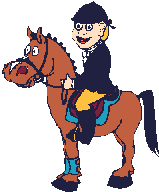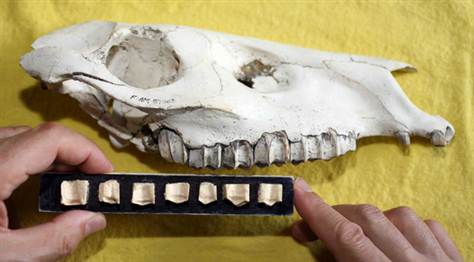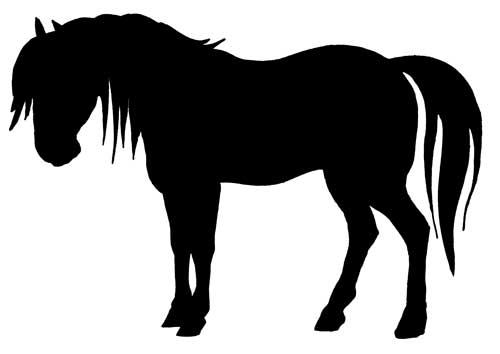 The Government Accountability Office (GAO) has released its eighteen month report entitled “Horse Welfare: Action Needed to Address Unintended Consequences from Cessation of Domestic Slaughter.” In 2009, Congress directed GAO to examine horse welfare following the end of domestic slaughter in 2007. You may view the complete report here: http://www.gao.gov/Products/GAO-11-228
The Government Accountability Office (GAO) has released its eighteen month report entitled “Horse Welfare: Action Needed to Address Unintended Consequences from Cessation of Domestic Slaughter.” In 2009, Congress directed GAO to examine horse welfare following the end of domestic slaughter in 2007. You may view the complete report here: http://www.gao.gov/Products/GAO-11-228
The study was requested by Congress in the 2010 Appropriations bill for the U.S. Department of Agriculture (USDA). The GAO is an independent federal agency that Congress often turns to for reports and analysis of important issues. GAO evaluates federal programs and policies; and provides analysis, recommendations, and other data to help Congress make informed policy, and funding decisions on issues before it.
Report Findings
The 63 page GAO report made a number of findings.
• The U.S. slaughter market has changed since domestic slaughter ceased in 2007. Exports to Canada and Mexico have increased with nearly the same number of U.S. horses now processed in those countries (138,000 in 2010), as were in the U.S. before the state bans on slaughter and the restrictions on paying USDA employees involved in the process were put in place.
• These horses are traveling further to slaughter now and are being slaughtered in facilities not protected by U.S. law and regulations.
• Many of the state veterinarians contacted for the report said that fewer horse sales have been held and that prices for horses have declined since 2007, especially for the lower-to-medium end of the horse market. This means owners have fewer options for getting rid of horses they no longer want. The number of shippers has also declined dramatically.
• The GAO analysis indicates that the prices for these horses have declined by 8 to 21 percent, depending on sale price (lower-to-medium end). GAO estimated that the economic downturn reduced prices for all horses by perhaps 4 to 5 percent, which does not account for the entire decline.
• Horse welfare has also declined; although, the precise extent is unknown. State, local government, and animal welfare organizations reported a rise in investigations for horse neglect, straining their resources. They attribute this to several factors, but primarily the ending of domestic slaughter and the downturn in the economy.
• Several state veterinarians reported more cases of horses abandoned on private or state parks since 2007. Nearly all reported anecdotes indicated that the number of cases of abandonments has increased.
• Based on the information these officials provided, the primary drivers for the increase in abandonment and neglect are the cessation of domestic slaughter, causing lower horse prices and difficulty in selling horses, and the economic downturn, affecting horse owners’ ability to properly care for their horses.
• State and local governments, tribes, and animal welfare organizations, especially rescues, are facing growing pressures to care for abandoned and neglected horses at a time of economic recession and tight budgets.
• Tribes reported increases in abandonments on their land, exacerbating the overpopulation of herds already there.
• The increase in unwanted horses available for sale or being abandoned on public lands is affecting the federal government’s ability to manage the wild horse and burro population and adopt out these animals in government holding facilities.
• USDA faces three challenges in overseeing the welfare of horses during the transport to processing plants: (1) the current regulations only apply to transport directly to the plant; (2) annual bans by Congress on USDA’s use of funds appropriated for inspecting horses impede USDA’s ability to improve compliance with, and enforcement of, the current transport regulations; and (3) horses are now traveling significantly greater distances to their final destination where they are not protected by U.S. humane slaughter protections.
• In particular, GAO found that the Congressional ban on funding for the inspection of horses bound for slaughter had impeded the USDA’s efforts to protect horse welfare because it only allows a USDA compliance officer to inspect the owner/shipper certificate, not the actual horses or their condition. Even if a compliance officer suspects a violation of the regulations regarding the physical condition of horses on the way to slaughter they are not allowed to inspect the horses to document potential violations by shippers.
• Even after the recent economic downturn is taken into account, horse abandonment and neglect cases are reportedly up, and appear to be straining state, local, tribal, and animal rescue resources. GAO found that clearly the cessation of domestic slaughter has had unintended consequences, most importantly, perhaps, the decline in horse welfare in the U.S.
Report Recommendations
The GAO report offered several recommendations to Congress and the USDA.
Matters for Congress
• In light of the unintended consequences, the report suggests that Congress may wish to reconsider the annual restrictions on USDA’s use of appropriated funds to inspect horses being transported to slaughter facilities to allow USDA to better ensure horse welfare and identify violations of the Commercial Transportation of Equines to Slaughter regulations.
• Congress may wish to consider allowing USDA to use appropriated funds to inspect horses at slaughter facilities under the Federal Meat Inspection Act.
• Alternatively, Congress may wish to consider an explicit ban on domestic slaughter and shipping horses for slaughter in foreign countries.
Matters for USDA
• To better protect horses USDA should adopt the amendments proposed several years ago to the transport regulations to more broadly define “equines for slaughter” so that federal oversight is extended to more of the transportation chain for horses going to processing facilities.
• USDA should use other agency resources to improve the completion, return and evaluation of the owner/shipper paperwork required under the transport regulations.
• USDA should enter into formal agreements with Canada and Mexico to improve the cooperation and assistance between USDA and the authorities in those countries responsible for processing horses.






